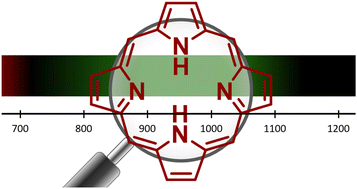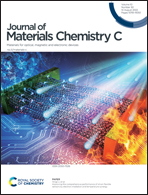meso-Ethynyl-extended push–pull type porphyrins for near-infrared organic photodetectors†
Abstract
Natural porphyrins play a key role in a range of vital functions such as oxygen transport in the bloodstream and the conversion of light to chemical energy in plants. Likewise, synthetic porphyrin derivatives can be used to detect light and convert it into an electrical current in photodiodes. The versatility of porphyrinoid chemistry allows to extend the absorptivity (and hence detectivity) to the near-infrared while maintaining good solubility, suitable electrochemical properties, and compatibility with the electron acceptor molecules required to achieve a reasonable photocurrent. Here, our efforts on the design and synthesis of novel push–pull type meso-ethynyl-extended porphyrin compounds, both of A–D–A and D–A–D type (D = donor, A = acceptor), and their evaluation in prototype near-infrared organic photodetector devices are presented. The push–pull design with strongly electron-deficient building blocks results in absorption onsets up to 1200 nm, translating in an optical gap approaching 1 eV. Both A–D–A and D–A–D small molecules show good photodetector performance, with a peak specific detectivity near 2 × 1011 and 4 × 1011 Jones at 1000 nm (at −2 V bias), respectively. These values are among the best reported so far for small molecule based near-infrared organic photodetectors.



 Please wait while we load your content...
Please wait while we load your content...
